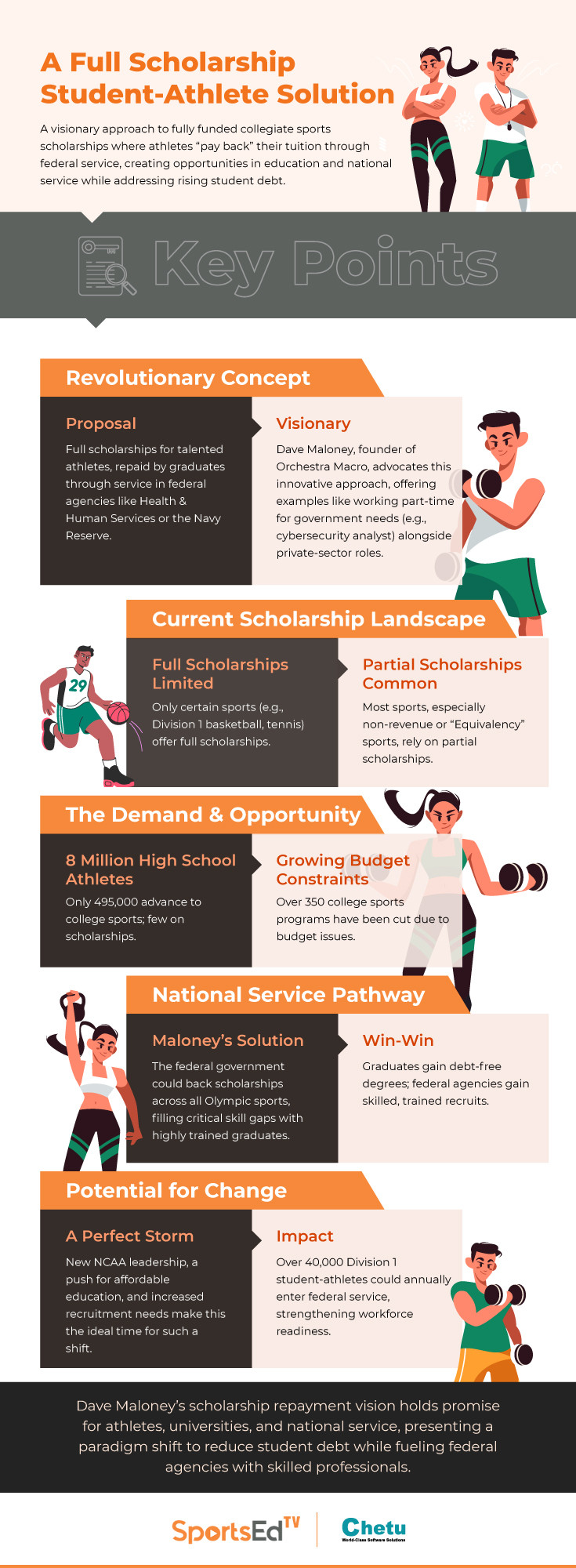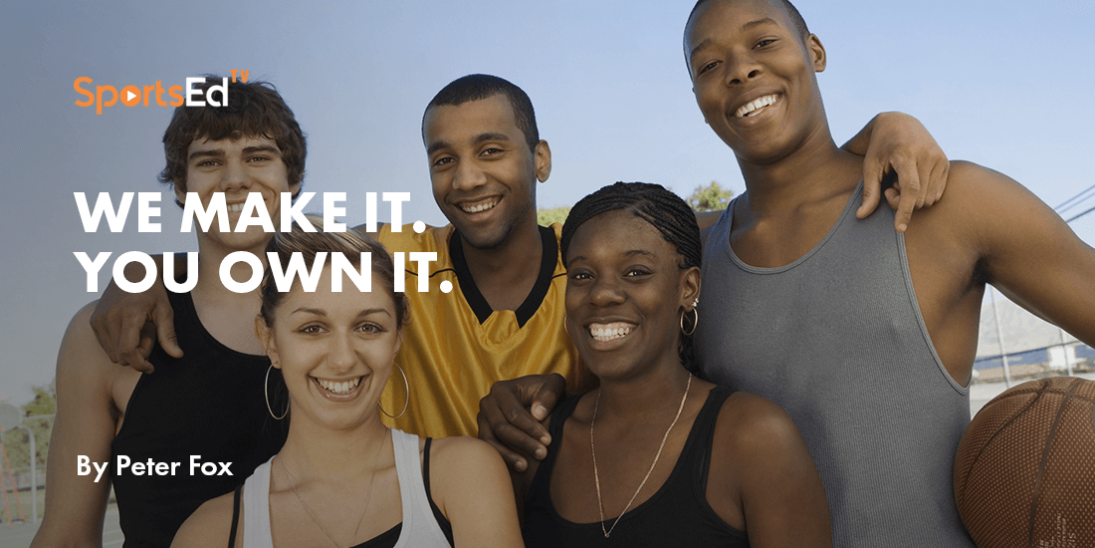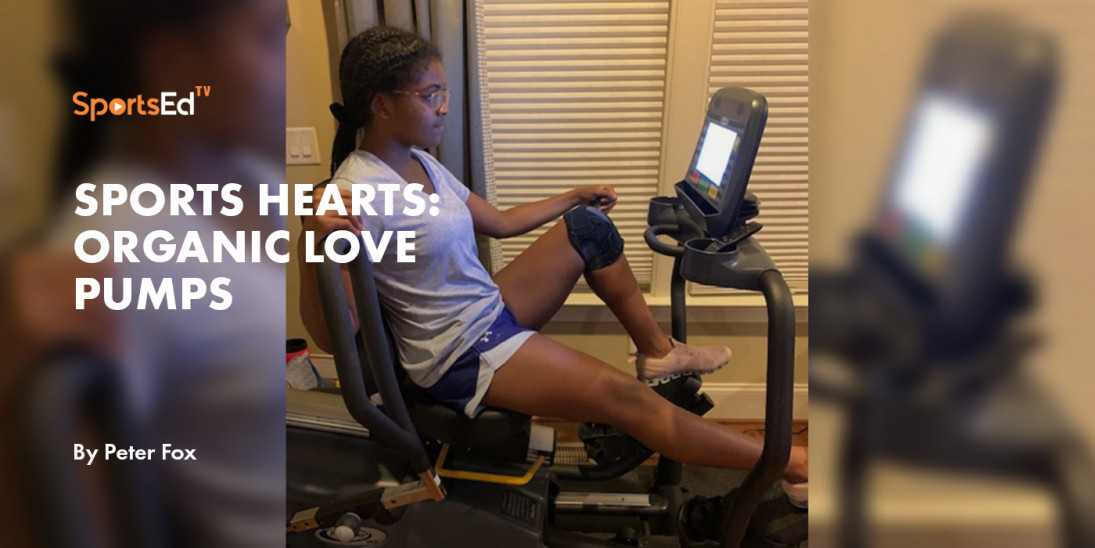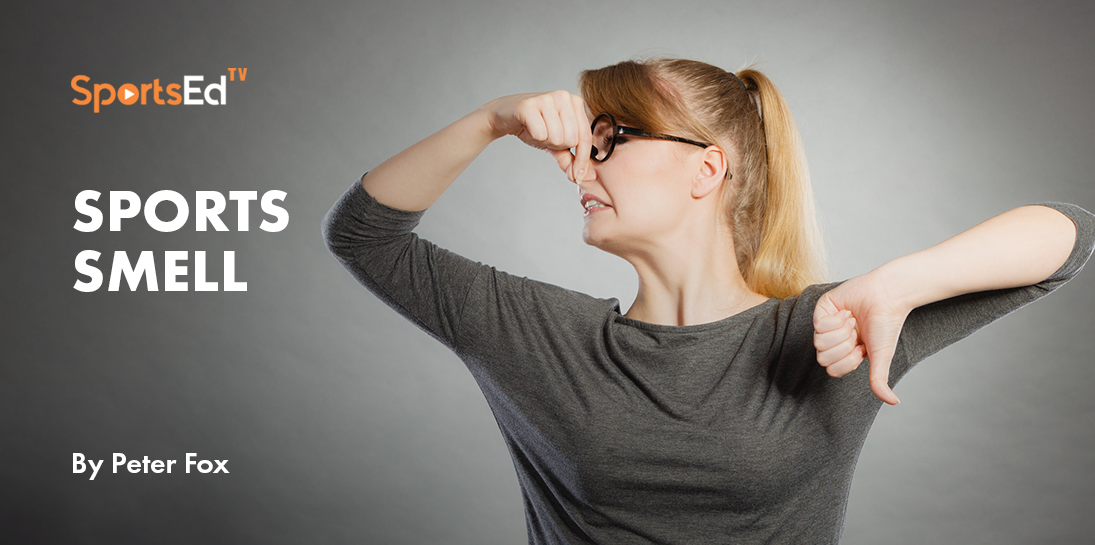Scholarship
Welcome and thanks for visiting...

A Full Scholarship Student-Athlete Solution
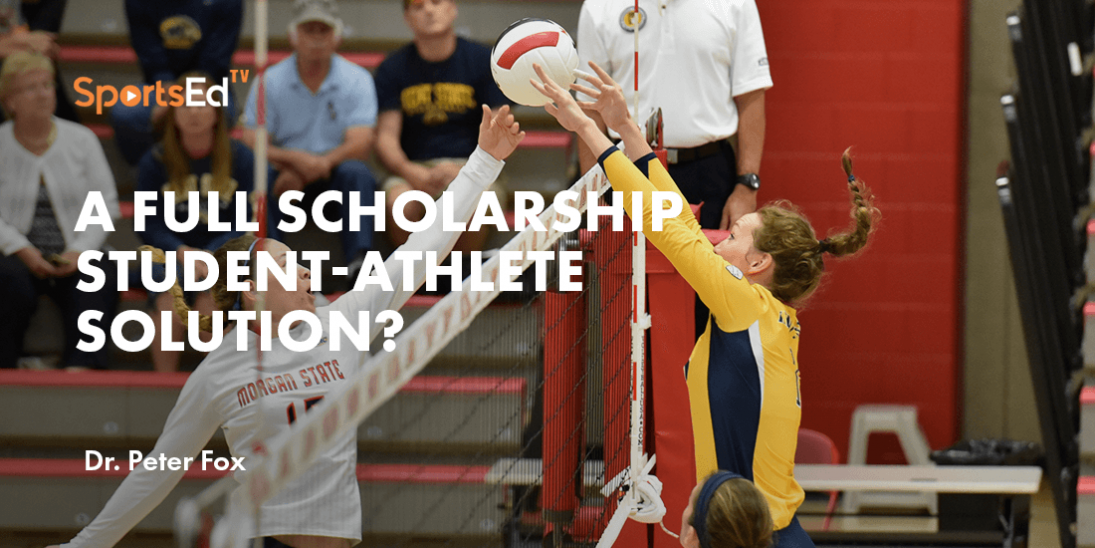
A few blogs ago, we assembled pointers for parents, athletes, and coaches seeking scholarships for talented high school athletes.
Days later, we encountered Dave Maloney, a former athlete and data-crunching visionary with an idea that could shake the scholarship world to its core. His concept? A fully funded collegiate sports scholarship program that athletes repay through national service after graduation—a perfect storm of collaboration between government, colleges, athletes, and private industry.
The Proposal: Scholarships Backed by National Service
Dave Maloney, founder of Orchestra Macro, already supplies the U.S. Air Force with training management software, fleshes out his proposal here.
"Go to UCLA. Get a degree. Participate on the gymnastics team. Graduate debt-free. Then help America. For you, that might mean working at Tesla full-time and spending one weekend a month and two weeks each summer as a next-generation cybersecurity analyst supporting the Navy Reserve.”
The Reality of Collegiate Sports Scholarships Today
For perspective, here’s a snapshot from our earlier blog on scholarships:
- Full Scholarships: These are typically limited to revenue-generating sports like Men’s Division 1 basketball and Division 1-A football; Women's Division 1 basketball, tennis, volleyball, and gymnastics.
- Partial Scholarships: Awarded in "Equivalency Sports," where coaches divide scholarship funds among athletes. Rarely do full scholarships exist in these sports.
- Sobering Statistics: NCAA reports that only 495,000 of 8 million high school athletes play collegiately—not all on scholarships. Meanwhile, over 350 collegiate sports programs have been canceled, often due to budget constraints.
A National Service Pathway for Student-Athletes
Maloney believes federal agencies like Health and Human Services, the Department of Labor, or the military could step in to fund the full educational costs for every collegiate athlete outside revenue sports.
For example:
- Instead of Stanford University’s 37-member wrestling team relying on 9.9 partial scholarships or San Diego State’s 50-member women’s rowing team managing with 20, federal support could guarantee fully paid scholarships.
- In return, over 40,000 Division 1 student-athletes could enter mission-critical federal roles annually, boosting agencies with their technological, physical, and cognitive skills.
The Demand for Extended Sports Careers
For many U.S. high school athletes, sports are the clearest pathway to higher education and a better life. This systemic thirst to play beyond high school is often hindered by the limited availability of scholarships and the rising costs of education.
A Perfect Storm for Change?
Could Maloney’s concept arrive at just the right time? The convergence of new NCAA leadership, rising recruitment challenges, and increasing pressure to relieve student debt might create the momentum for this paradigm shift.
His vision feels like a win-win-win: a brighter future for athletes, stronger collegiate sports programs, and a revitalized workforce for critical federal agencies.
As always, the proof lies in the execution. Will this bold idea gain traction in a landscape ready for change?



